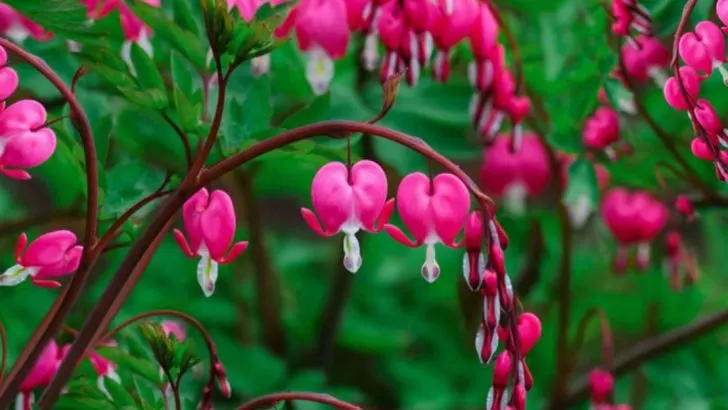Pruning is essential for healthy plant growth, but timing is everything. Some plants need to be left alone in early spring to ensure they bloom beautifully and thrive throughout the season. Here are 25 plants you should avoid pruning in early spring – and the reasons why waiting will benefit your garden in the long run.
Hydrangea Macrophylla
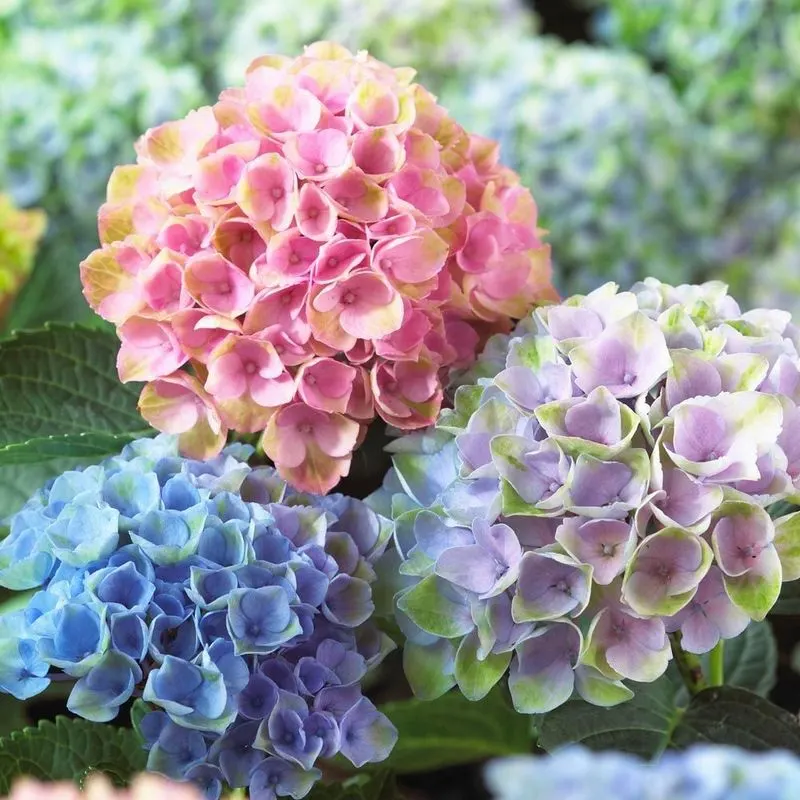
Hydrangea Macrophylla, known for its vibrant blooms, develops its flower buds on old wood. Pruning in early spring can inadvertently remove these buds, resulting in fewer flowers. It’s best to prune them after flowering ends in late summer. This approach ensures that the plant retains its natural form and continues to produce striking displays. Gardeners should aim to remove dead wood and shape the plant gently, avoiding any drastic cuts. For optimal blooms, keep the soil evenly moist and provide partial shade, as excessive sunlight can lead to wilting.
Lilac
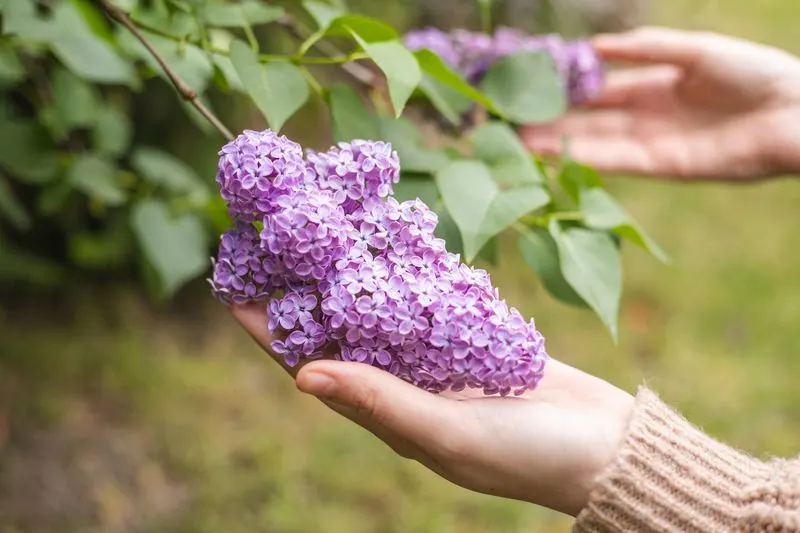
Lilacs thrive when pruned immediately after their spring flowering period. This timing ensures that the plant has sufficient time to develop buds for the following year. Pruning in early spring can cut off these developing buds. Instead, trim spent blooms to encourage new growth. Aim to thin the bush by removing the oldest branches at their base, which promotes air circulation. With proper care, lilacs will reward you with fragrant blooms each year. Their blossoms add a classic touch to gardens, making them a favorite among many gardeners.
Forsythia
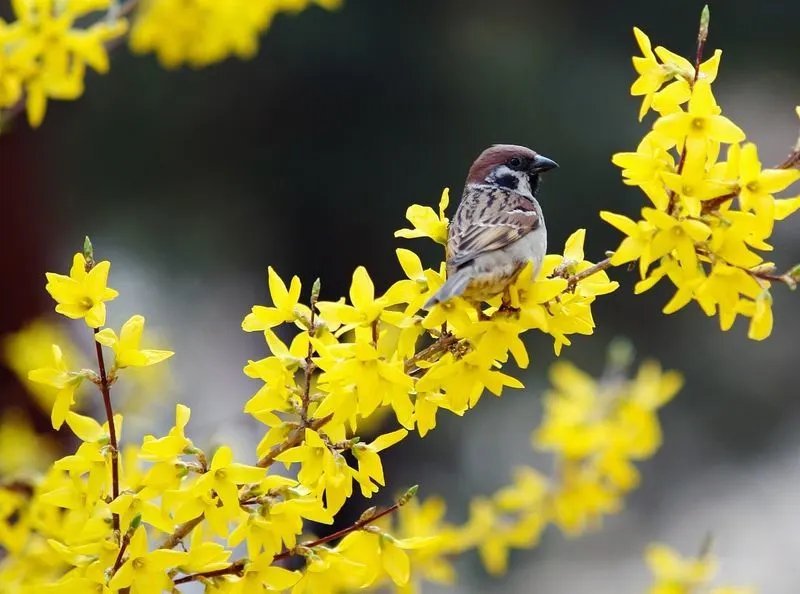
Forsythia is one of the first signs of spring, heralded by its vibrant yellow flowers. Pruning this shrub too early can strip it of its colorful display. To maintain its cheerful appearance, prune immediately after flowering. This allows the plant to set buds for the next season. Focus on removing any dead or crowded branches to enhance air flow. Forsythia can become unruly, so regular pruning helps manage its size and shape. With the right care, it remains a bright spot in any garden, heralding the arrival of spring.
Azaleas
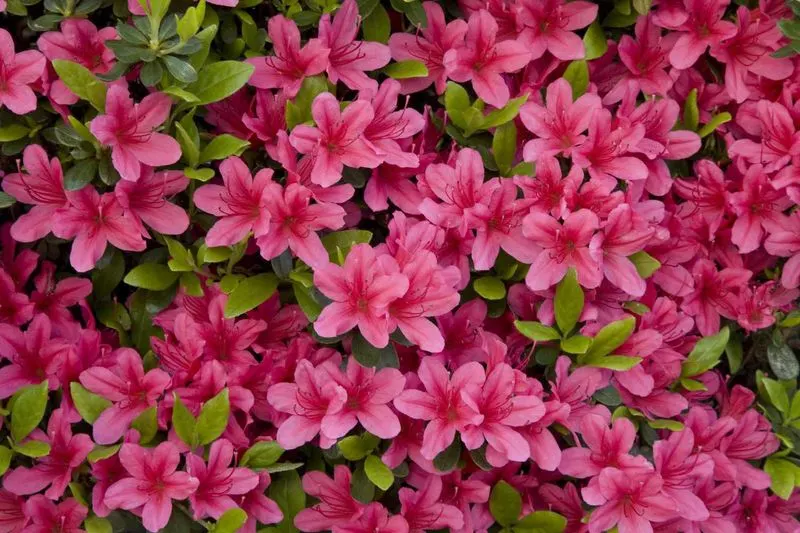
Azaleas are cherished for their dazzling spring blooms. To ensure a vibrant display, avoid pruning before they flower. Early spring pruning can remove the flower buds, resulting in a less impressive show. Wait until after they have bloomed to trim and shape the plant. Remove spent flowers and any dead or damaged wood. Azaleas prefer acidic soil and dappled sunlight, thriving in conditions that mimic their natural woodland environment. Regular mulching helps retain moisture and suppress weeds, keeping these plants healthy and flowering beautifully year after year.
Clematis
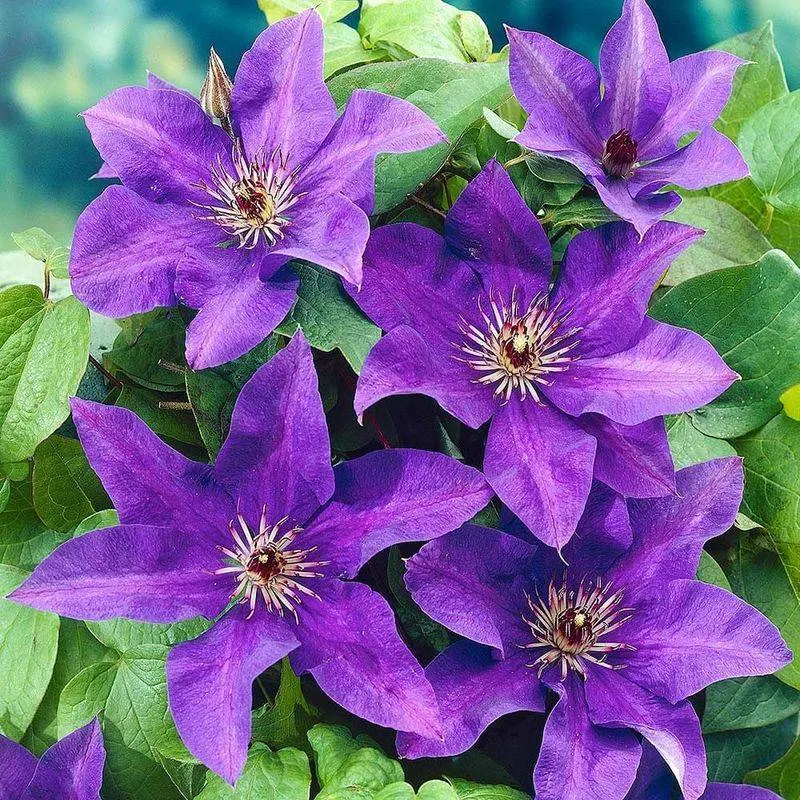
Clematis varieties have different pruning needs, and early spring pruning isn’t suitable for all. Group 1 Clematis, for instance, bloom on old wood and should only be pruned after flowering. Cutting them back in spring could mean losing an entire season of blooms. Focus on removing dead or weak growth and gently shaping the plant. Ensure the roots are kept cool and shaded, perhaps by planting low-growing perennials nearby. By understanding the specific needs of your Clematis, you can enjoy a cascade of flowers in their full glory.
Wisteria
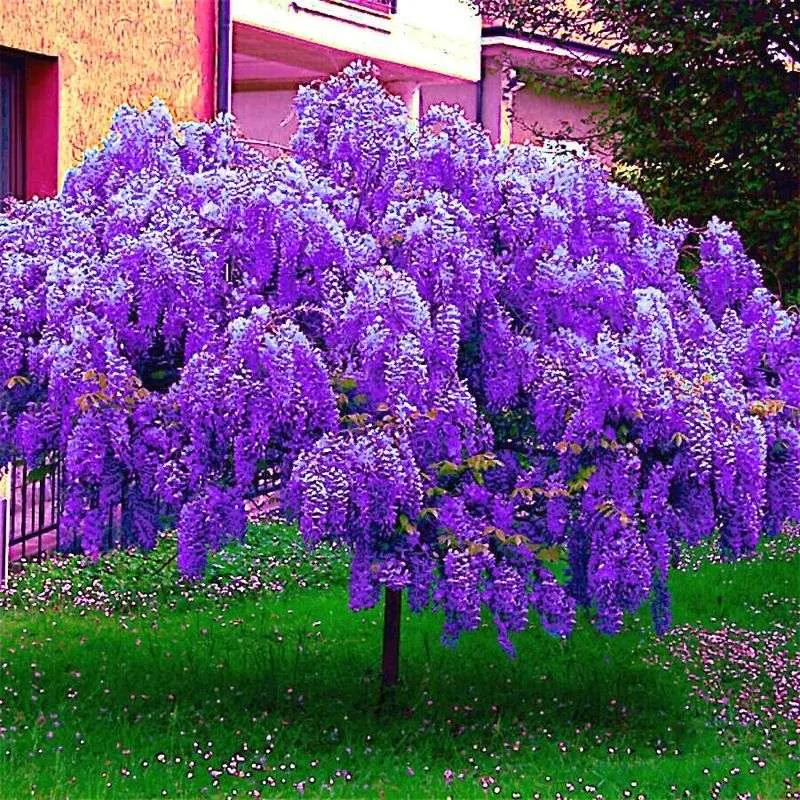
Wisteria, known for its enchanting blooms, requires careful timing for pruning to ensure a spectacular display. Early spring pruning can remove flower buds, diminishing its beauty. Instead, prune in late summer, after flowering, to control its vigorous growth. Focus on cutting back the long shoots and removing any unwanted stems. Wisteria thrives in full sun with a sturdy support structure to climb. When pruned correctly, it can transform arbors and pergolas into breathtaking floral displays. Regular maintenance keeps this vigorous plant in check, allowing its elegance to shine.
Rhododendrons
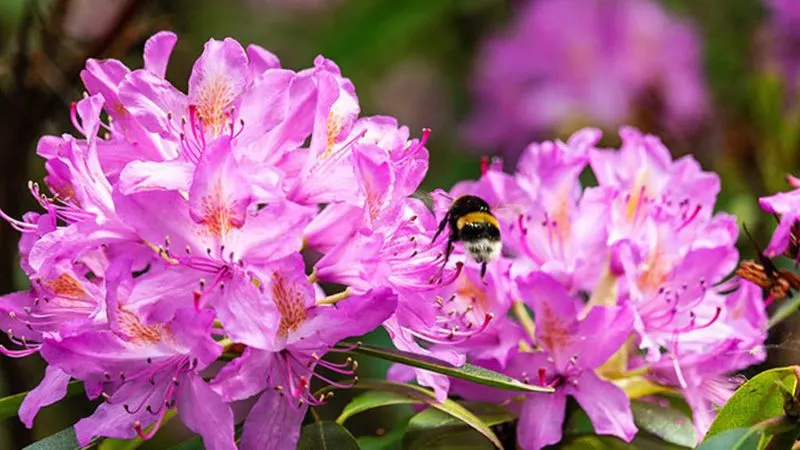
Rhododendrons are a staple in many gardens, prized for their large, showy blooms. Pruning them in early spring can remove the buds that formed the previous summer. Instead, prune immediately after flowering to maintain their shape and encourage next year’s buds. They prefer acidic, well-drained soil and benefit from mulching. Water them deeply in dry spells to keep the roots moist. With the right care, Rhododendrons will grace your garden with their spectacular blossoms. Regular deadheading of spent blooms can also promote healthier growth and a more vigorous plant.
Flowering Quince
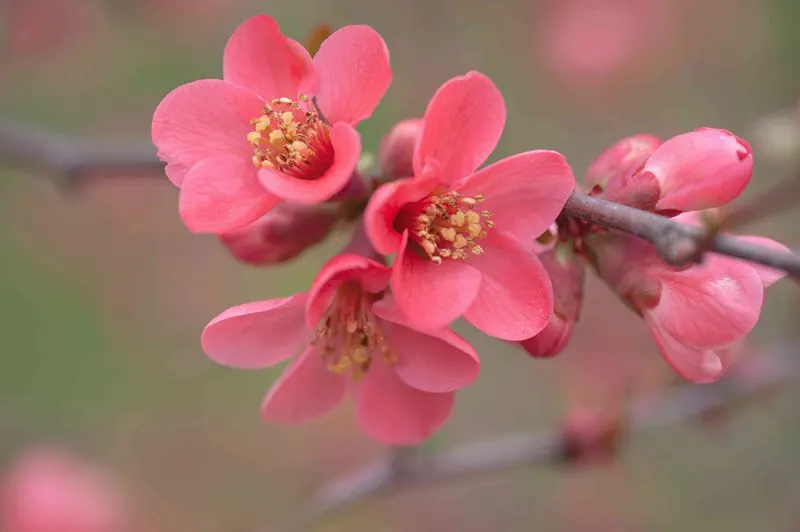
Flowering Quince is an underrated gem, with vibrant flowers that appear before the leaves. Early spring pruning can rob you of these colorful blooms. Wait until after it flowers to shape the plant. Remove any dead or overcrowded branches to improve air circulation. This hardy shrub is adaptable but prefers full sun for the best flowering. Flowering Quince adds a splash of color to borders and is often used for hedging. Pruning helps maintain its structure, ensuring a neat appearance and a profusion of flowers each spring.
Camellias
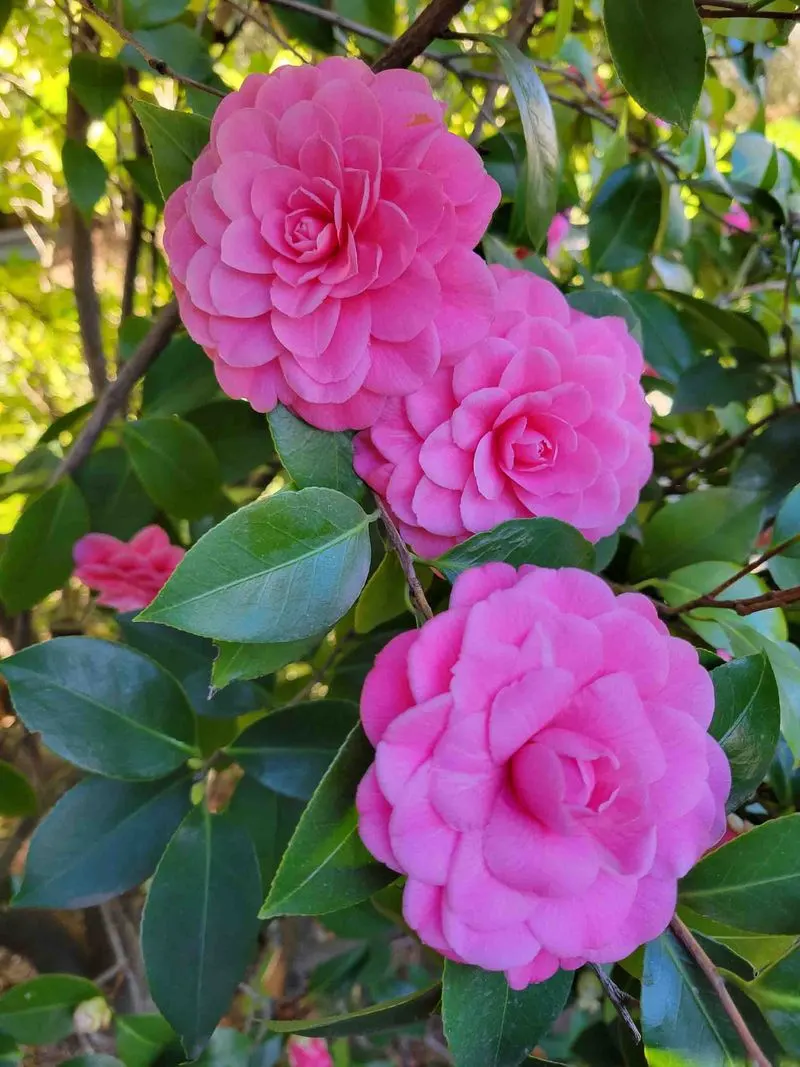
Camellias, with their glossy leaves and exquisite blooms, set buds in late summer. Pruning in early spring can remove these buds, leading to a disappointing flower display. Instead, prune after they finish flowering to tidy up and shape the plant. Remove any dead wood and thin out crowded branches. Camellias thrive in acidic soil with dappled light, making them ideal for woodland gardens. Regular watering and mulching keep them healthy. With careful pruning and the right conditions, Camellias can be a highlight in any garden, providing structure and beauty.
Peonies
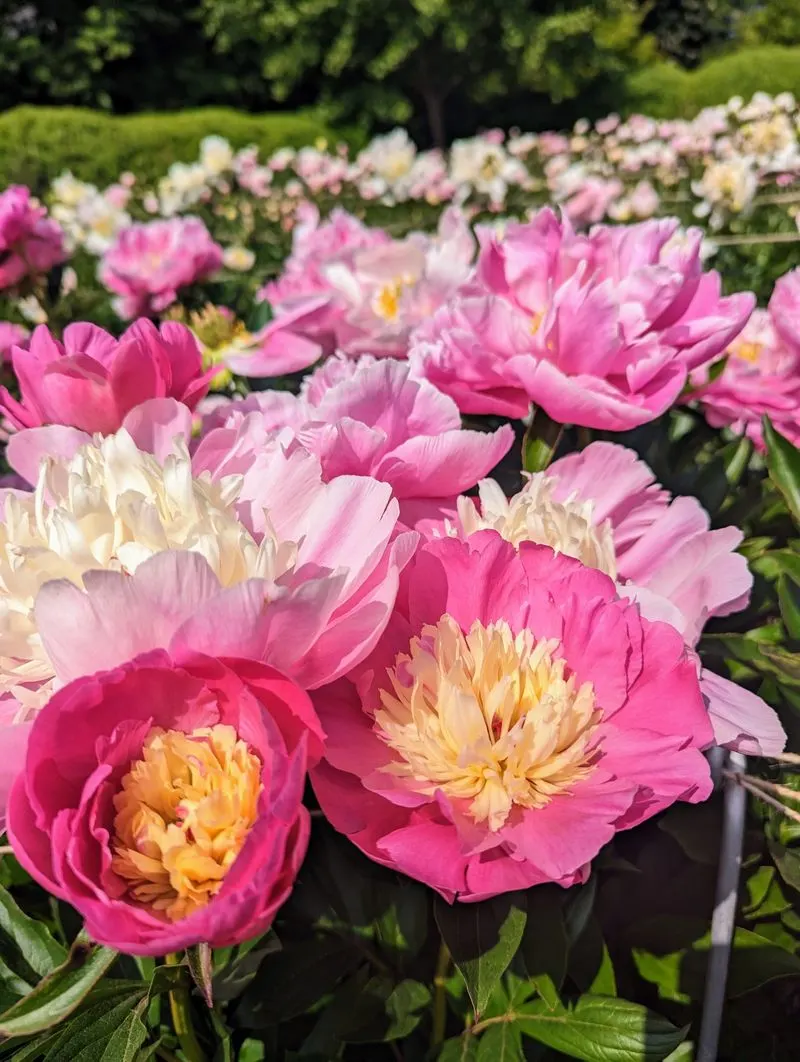
Peonies are garden favorites, known for their large, aromatic flowers. Pruning in early spring isn’t recommended as it can affect blooming. Instead, remove dead foliage in the fall to prepare for winter. In spring, simply clean up any remaining debris and watch for emerging shoots. Peonies prefer full sun and well-drained soil. Support structures may be needed for taller varieties to prevent blooms from drooping. By avoiding early spring pruning, you ensure a spectacular floral display. Peonies add elegance to borders and are perfect for cut flower arrangements.
Viburnum
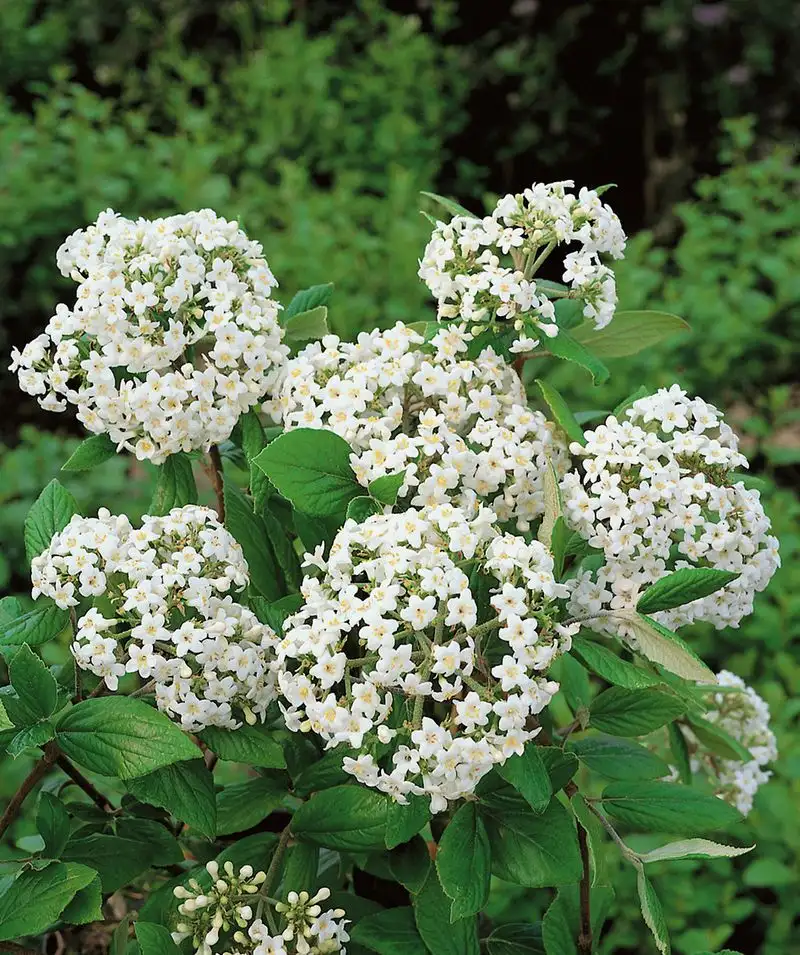
Viburnum’s fragrant flowers and colorful berries make it a garden standout. Pruning in early spring can sacrifice its blooms. Instead, prune after flowering to shape the shrub and encourage healthy growth. Remove any crossing or dead branches to improve its structure. This versatile plant thrives in a variety of conditions, from sun to partial shade. Regular watering during dry spells helps maintain its vigor. Viburnum adds texture and color to landscapes with its seasonal interest. Proper pruning ensures a robust and attractive plant year-round.
Mock Orange
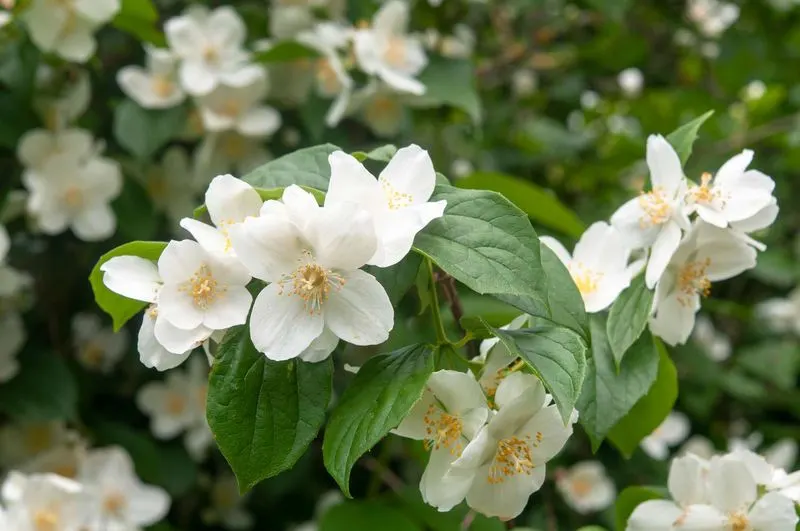
Mock Orange is known for its citrus-scented white blossoms. Pruning in early spring risks losing these delightful flowers. Wait until after it blooms to prune, focusing on removing old wood and shaping the plant. This encourages new growth and robust flowering. Mock Orange prefers well-drained soil and full sun to partial shade. Regular pruning helps maintain its size and encourages a bushier form. Its fragrant flowers make it a favorite near patios and walkways. With the right care, Mock Orange can be a fragrant highlight in any garden.
Magnolia
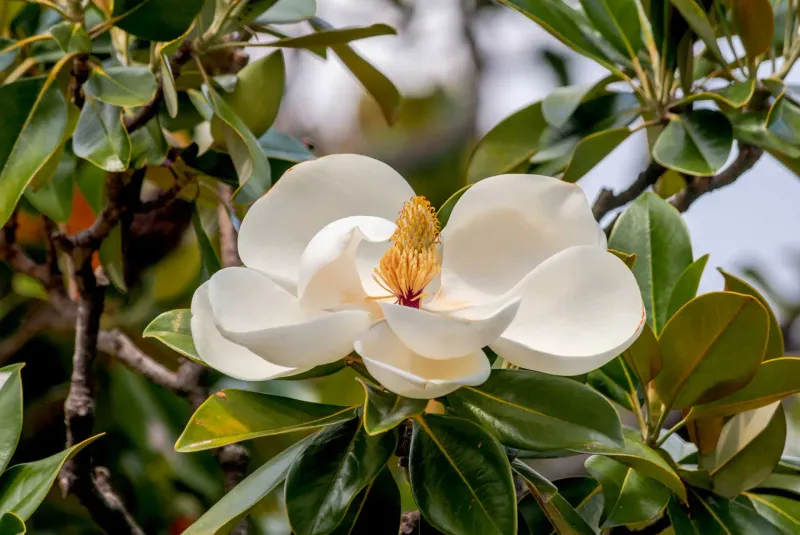
Magnolias are celebrated for their striking blossoms, which can be diminished by untimely pruning. Avoid early spring cuts, as these can remove blooming branches. Instead, prune after flowering to maintain their shape and health. Focus on removing any dead or damaged wood. Magnolias thrive in full sun to partial shade with well-drained soil. Their dramatic flowers add elegance to any landscape. With correct pruning and care, these trees will continue to provide a stunning show each spring, making them a prized addition to gardens.
Dogwood
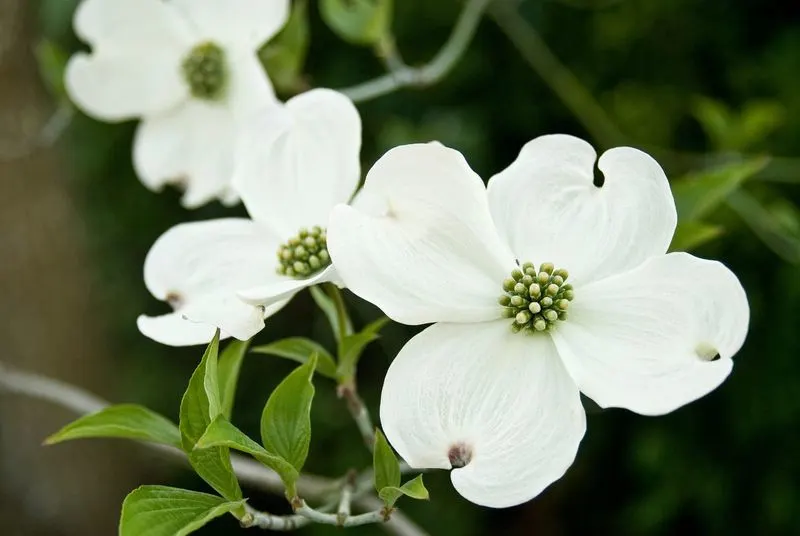
Dogwood trees are a spring highlight with their delicate flowers. Pruning in early spring can cut off the buds, reducing the floral display. It’s better to prune right after blooming. Focus on removing dead or crossing branches to enhance its structure. Dogwoods prefer well-drained soil and can tolerate partial shade. They offer beautiful foliage in the fall, adding year-round interest. Proper pruning ensures healthy growth and a breathtaking spring show. Dogwoods can be the focal point of a garden, attracting attention with their unique beauty.
Weigela
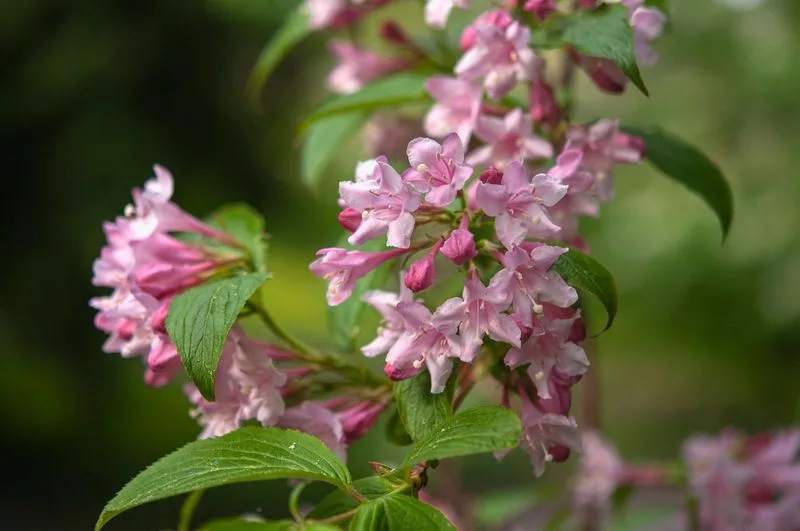
Weigela is a stunning shrub with tubular flowers that attract hummingbirds. Early spring pruning can remove flower buds, hindering its beauty. Prune after flowering to maintain a compact shape and promote further blooms. Focus on thinning out older stems to encourage new growth. This shrub thrives in full sun with well-drained soil, rewarding gardeners with vibrant flowers. Regular pruning keeps Weigela healthy and enhances its flowering. Its colorful blooms make it a lively addition to borders and can create a vibrant backdrop in gardens.
Spirea
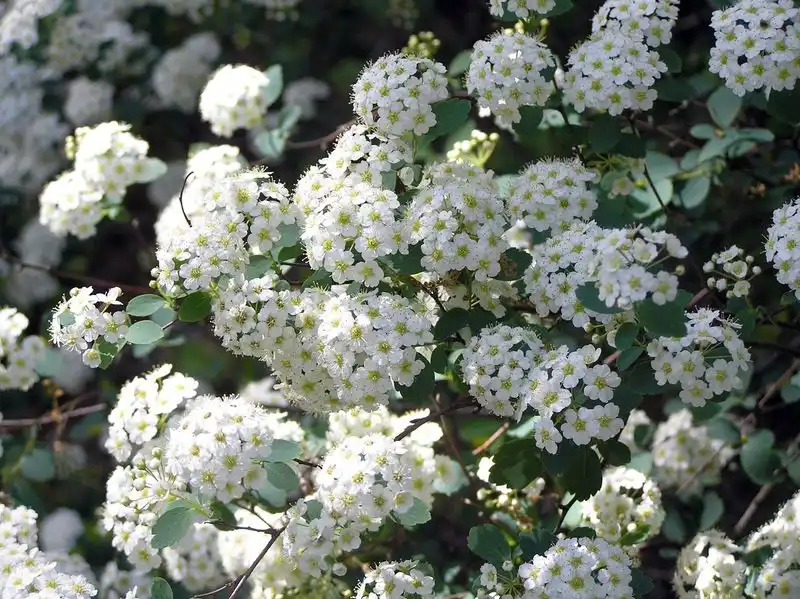
Spirea’s cascading blooms add a delicate touch to gardens. Pruning in early spring can rob it of its flowers. Instead, prune after flowering to shape and control its growth. Remove any dead branches and thin out crowded areas. Spirea thrives in full sun with well-drained soil, making it a low-maintenance choice for gardeners. Its flowers attract pollinators, adding to its charm. Regular pruning not only maintains its shape but also encourages a more floriferous display. Spirea can be a stunning feature in mixed borders or as standalone shrubs.
Philadelphus
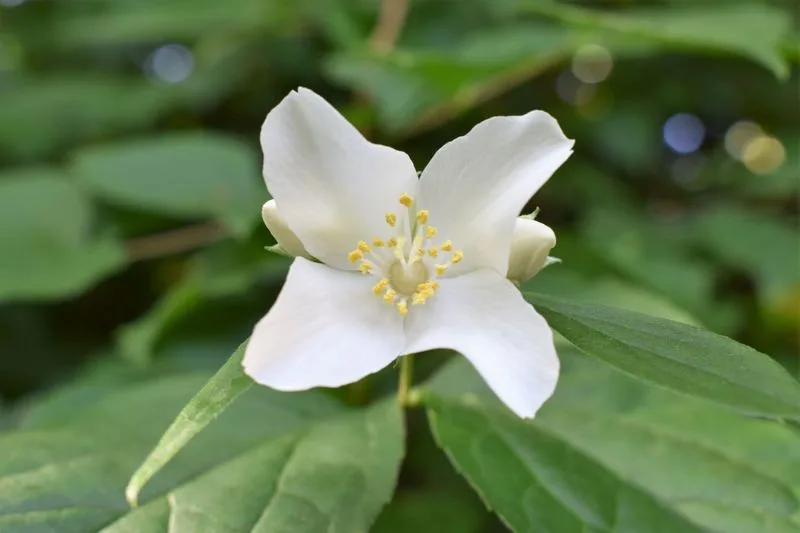
Philadelphus, commonly known as Mock Orange, is adored for its aromatic white flowers. Early spring pruning can result in fewer blooms. Wait until after flowering to prune, focusing on removing old wood and encouraging new growth. This helps maintain a bushy appearance and prolific flowering. Philadelphus thrives in full sun to partial shade, preferring well-drained soil. Regular pruning aids in controlling its size and shape. The fragrant blooms make it ideal for planting near living spaces. With attention to pruning, Philadelphus can be a delightful addition to any garden.
Bleeding Heart
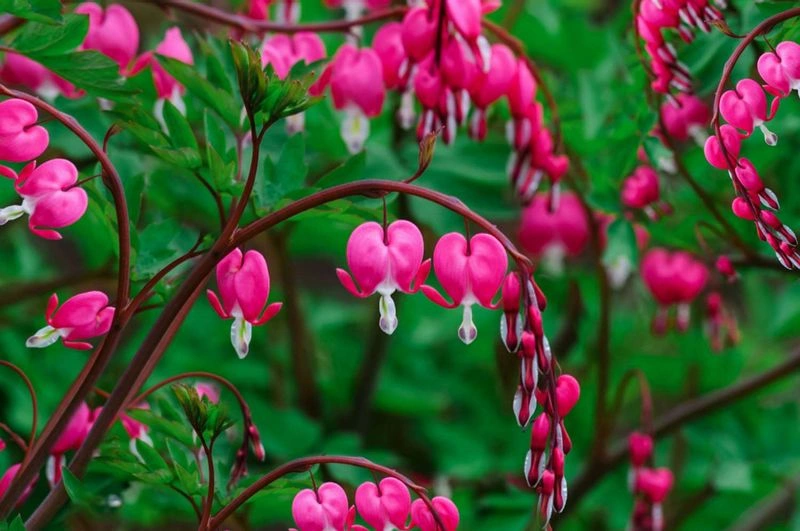
Bleeding Heart is a woodland plant, cherished for its unique heart-shaped flowers. Pruning in early spring can disrupt its natural growth and flowering. Instead, allow the foliage to die back naturally after blooming. This plant prefers shady, moist environments and benefits from rich, well-drained soil. Mulching helps retain moisture and suppress weeds. Minimal pruning is needed, mainly to remove dead stems after the growing season. With proper care, Bleeding Heart adds a touch of whimsy to shade gardens, captivating with its distinctive blooms.
Deutzia
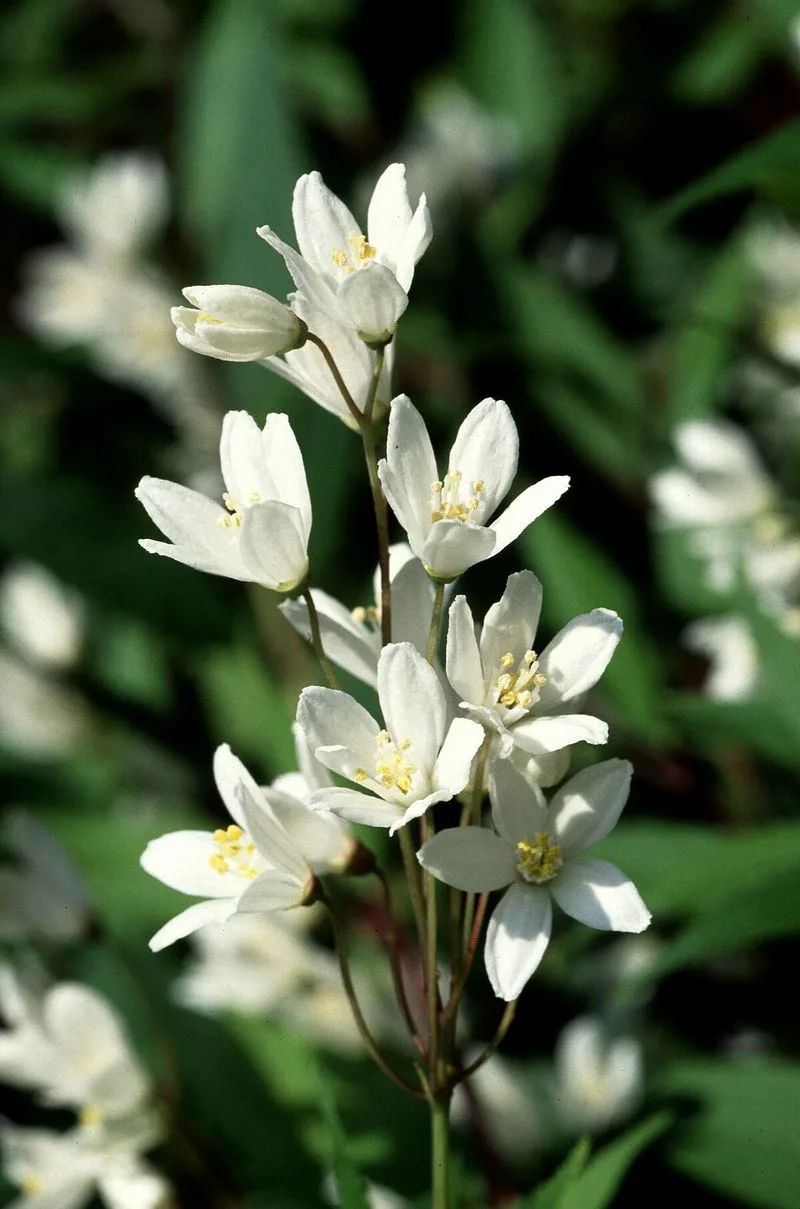
Deutzia is an ornamental shrub noted for its profusion of small flowers. Pruning in early spring can hinder its floral display. Instead, trim after flowering to maintain its shape and encourage more blooms. Focus on removing dead or weak branches. Deutzia thrives in full sun or partial shade with well-drained soil. Its charming flowers attract pollinators, making it a valuable garden addition. Regular pruning keeps this shrub healthy and enhances its natural form. Deutzia’s flowering can brighten up any garden space with its springtime charm.
Pieris Japonica
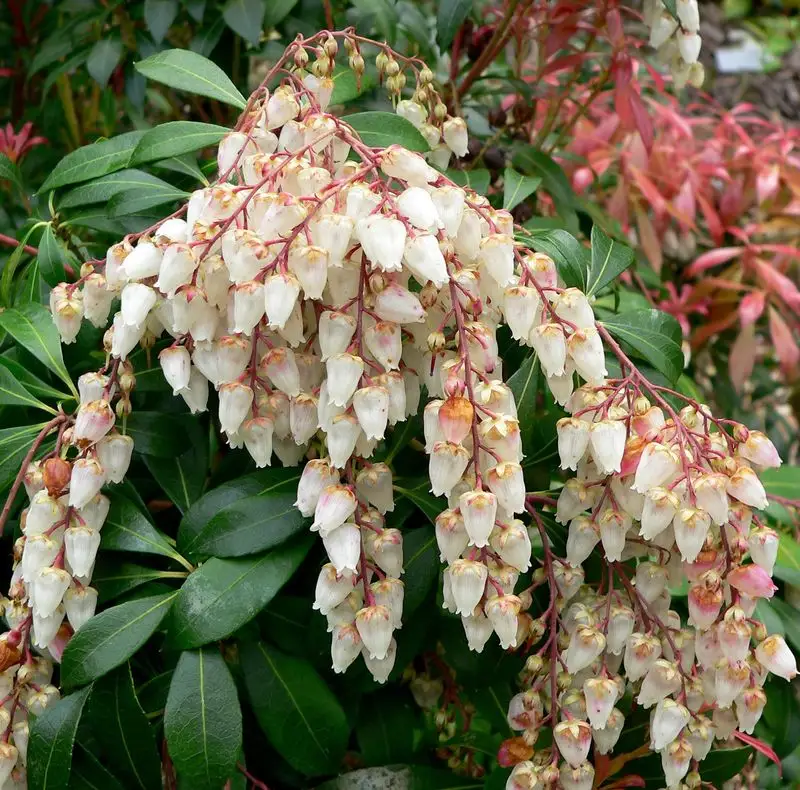
Pieris Japonica is valued for its cascading blooms and vibrant new growth. Pruning in early spring can reduce its flowering potential. Instead, prune after flowering to shape and remove any dead wood. This evergreen shrub thrives in acidic, well-drained soil with partial shade. Regular watering and mulching keep it healthy. Its flowers attract pollinators, adding ecological value to gardens. By timing your pruning right, Pieris Japonica can continue to provide interest with its floral displays and colorful foliage, enriching garden spaces.
Japanese Kerria
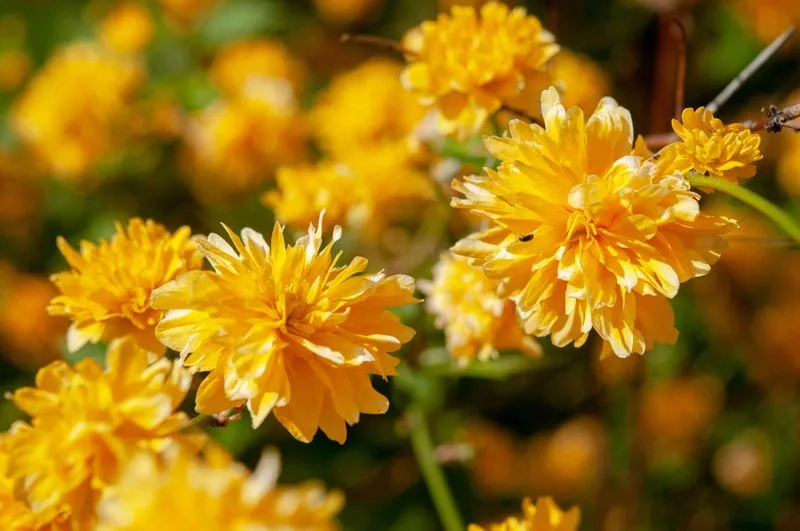
Japanese Kerria is a graceful shrub with bright yellow flowers. Pruning in early spring can lessen its flower display. Wait until after blooming to prune, focusing on removing dead or weak growth. This encourages a healthy, bushy form. Japanese Kerria thrives in partial shade and moist, well-drained soil. Regular pruning helps control its size and promotes more blooms. Its cheerful flowers add a splash of color to shaded areas. By providing the right conditions and careful pruning, Japanese Kerria can be a standout feature in any garden.
Fothergilla
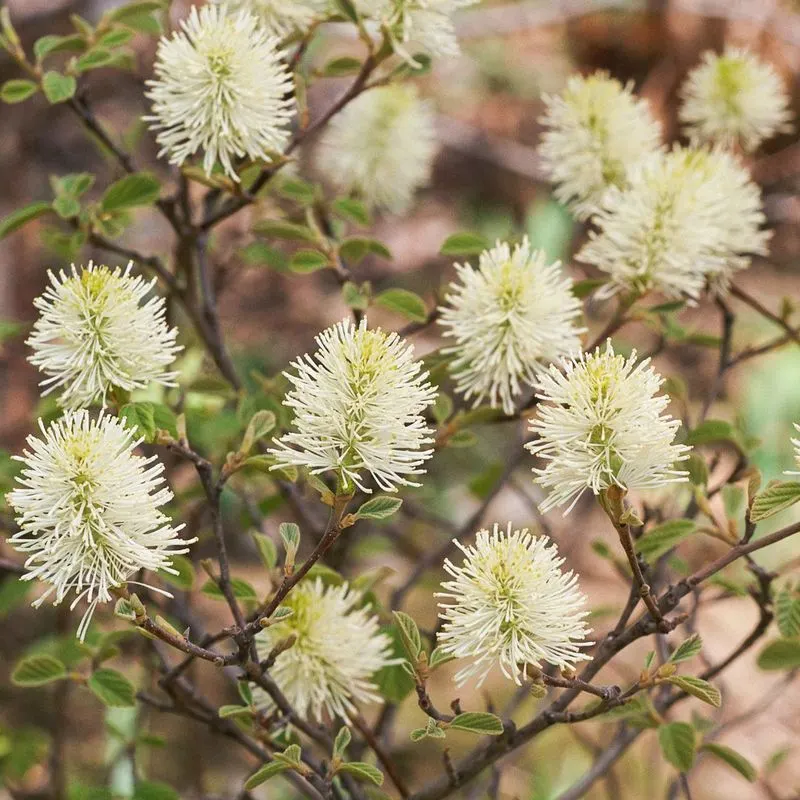
Fothergilla is admired for its bottlebrush flowers and stunning fall colors. Pruning in early spring can remove flower buds, affecting its seasonal display. Instead, prune after blooming to shape and remove dead wood. This shrub thrives in sun to partial shade with well-drained soil. Regular watering during dry spells supports healthy growth. Fothergilla attracts pollinators and adds diversity to garden plantings. With careful pruning, it maintains its natural beauty and provides interest throughout the growing season with its flowers and colorful foliage.
Abelia
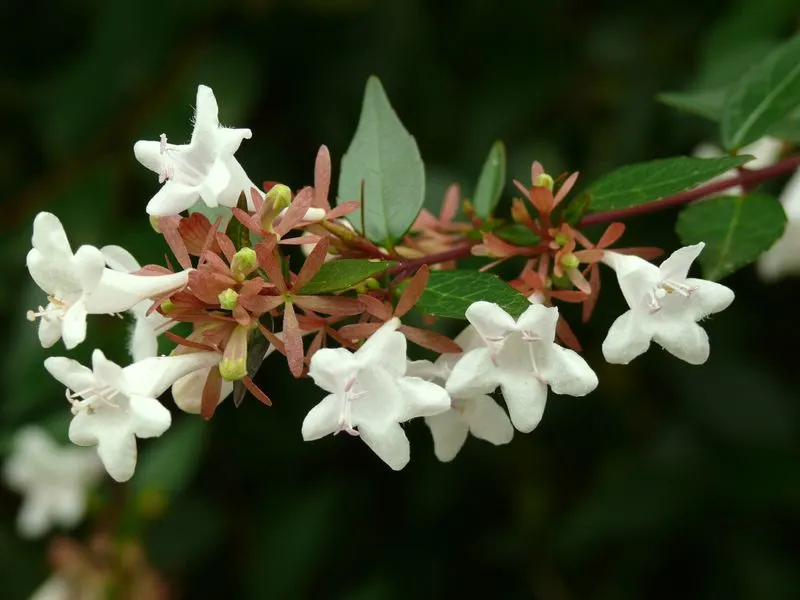
Abelia is known for its fragrant, tubular flowers that attract pollinators. Pruning in early spring can lead to fewer blooms. Instead, prune after flowering to manage its shape and remove old wood. Abelia thrives in full sun to partial shade and adapts well to various soils. Regular pruning ensures a compact form and encourages prolific blooming. Its long flowering period adds extended interest to gardens. With the right care, Abelia becomes a valuable addition to borders and mixed plantings, offering beauty and ecological benefits.
Kalmia Latifolia

Kalmia Latifolia, or Mountain Laurel, is prized for its intricate blooms. Pruning in early spring can reduce its flowering. Instead, prune after blooming, focusing on shaping and removing dead branches. This shrub thrives in acidic, well-drained soil with partial shade. Regular watering during dry spells helps maintain its health. Kalmia Latifolia’s flowers attract pollinators, enriching garden ecosystems. With the right timing and care in pruning, this shrub can continue to be a highlight in gardens, offering beauty and environmental value.

